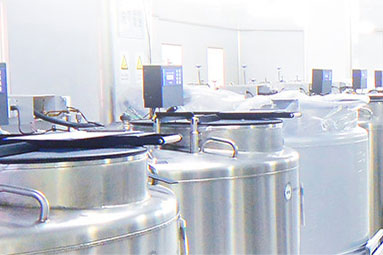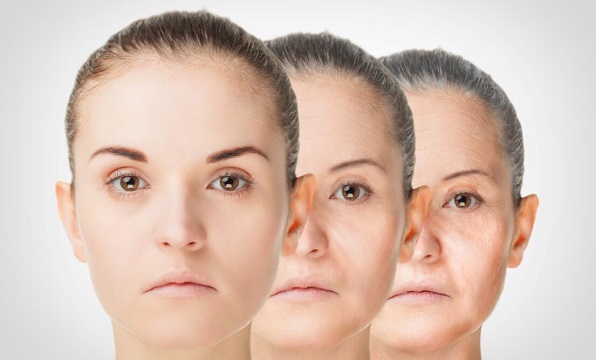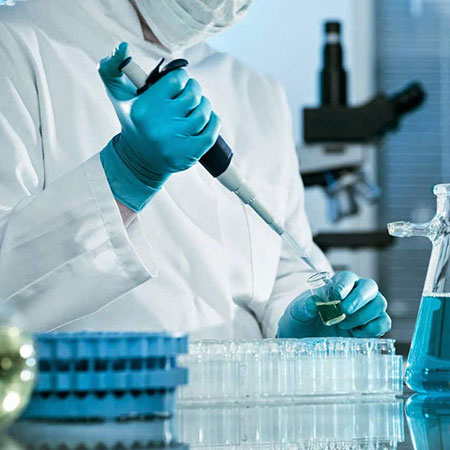- Email:[email protected]
- Tel: (852)51044851
-
Houston Plastic Surgeon Dr. Henry Mentz to Present Stem Cell Expertise at International Conference
For Houston plastic surgeon and facelift expert Dr. Henry Mentz, stem-cell enriched fat grafting is a powerful component of a facial rejuvenation plan not only because it effectively replenishes lost facial volume, but also because stem cells may have the potential to improve the skin’s tone and texture. The award-winning surgeon will present the most effective methods to collect, separate, and use stem cells for cosmetic surgery procedures at an upcoming conference in Miami which will bring together medical and science professionals from across the globe. Sponsored by the International Federation for Adipose Therapeutics and Science (IFATS), the conference provides a platform for members to discuss the various therapeutic and cosmetic applications for adipose (fat) tissue. Because of stem cells’ unique ability to regenerate themselves and repair damaged tissues, Dr. Mentz has been actively working with leading stem cell researchers to increase their concentration within fat grafts. Though no current evidence proves this benefit, some scientists and physicians believe the cells may help to rejuvenate surrounding tissues. In the IFATS presentation, Dr. Mentz will discuss the use of a mechanical processing device which helps to isolate stem cells from fat that is removed during a liposuction procedure. In the procedure, fat is liposuctioned from areas where it is undesired such as the abdomen and thighs, and a special process is used to concentrate the stem cells to be used for the fat grafting treatment. Dr. Mentz frequently uses fat grafting to fill in lines, wrinkles, and folds, and to restore volume to the cheeks, temples, and other areas of the face that have become lean and hollow. As part of the aging process, the face often becomes more gaunt due to an erosion in facial fat, which can cause sagging to increase, as well. While cosmetic fillers can also be used to fill in wrinkles and restore volume, fat grafting has several advantages in addition to the potential benefit of being rich in stem cells. Because the fat comes from a person’s own body, there is little risk of an allergic reaction, and fat grafts can be long lasting, though their duration varies between individuals. Dr. Mentz frequently performs fat grafting in conjunction with facelift surgery. While facelift surgery helps to correct the appearance of jowls and a sagging midface, the restoration of lost facial volume is an important component of a plan to restore a natural-appearing youthful and supple…
[Read More] -
Stem Cell Fat Grafting Dynamically Restores Volume
LAS VEGAS – When using fat and stem cell transfer for facial volume enhancement, it’s disingenuous to tell patients a stem cell face-lift is being performed, said Dr. Mark Berman. The accurate description is to tell patients a stem cell fat graft is being performed. “Tell them ‘we’re using a fat graft, and the reason it works is because your fat is loaded with stem cells, which can turn on, proliferate, and grow new fat cells,’ ” Dr. Berman said at the annual meeting of the American Academy of Cosmetic Surgery. “This is a dynamic process.” Courtesy Dr. Mark Berman A patient is shown before (left) and after undergoing stem cell fat grafting for facial enhancement. In 2008, Dr. Hee Young Lee introduced Dr. Berman to a system he created, known as the Lipokit (Medi-Khan, Korea and currently distributed as the Adivive system by Palomar), a closed device approved for condensed autologous fat transfer. Dr. Berman said he began using the system at his Beverly Hills, Calif.–based cosmetic surgery practice for facial volume enhancement. A key component of the device, he said, is the fat-processing unit, a single-use, disposable syringe with a bidirectional moving piston, a microfilter, a fluid gate, and a weighted metallic ring. “What makes this syringe unique is that it allows you to compress and filter the fat at the same time, so you actually increase the concentration of cells,” said Dr. Berman. “You can also put in tumescent anesthesia in this system real easily.” Early in his clinical experience with the Adivive system, he said he would spin harvested fat in a centrifuge at 4,000 rpm for 8 minutes. Now he spins the harvested fat at 2,800 rpm for 3 minutes. “The difference is, at the lower rate, the stem cells tend to have increased viability, while at the higher rate you get increased concentration of stem cells,” Dr. Berman explained. The results of stem cell fat grafting for facial volume enhancement are generally superior to those achieved with dermal filler injections because the process restores facial volume naturally. “Most of our face-lift patients don’t want to look different; they want to look like they used to,” he said. “Aging is not about sagging skin caused by gravity. Gravity does not cause aging; it just affects how you look in different positions.” Aging, he continued, is caused by “loss of facial fat, loss of skin elasticity,…
[Read More] -
Fat Grafting, Stem Cell Combination Replaces Implants
Nikko Cosmetic Surgery Center offers a new body shaping procedure that utilizes regenerative stem cells to graft fat to muscle and tissue, providing higher-quality, longer-lasting results compared to traditional cosmetic surgery techniques. Industry experts believe fat grafting is the future of cosmetic surgery and will replace traditional implants forever. “Fat injections offer tremendous advantages over conventional procedures,” says Dr. Nikko. “It’s a scarless, non- invasive technique with minimal recovery and no rejection issues. We’re actually using the patient’s own fat and cells, not a foreign object. The appearance of fat over implants is also very natural, which is mostly what patients are looking for.” Fat grafting requires two separate procedures. The first is a body contouring technique that removes unwanted fat through liposuction. That fat is then centrifuged with stem cells and automatically injected into the muscle beds or tissue of the patient to shape and augment the area of their choosing. The inserted fat containing stem cells continues to regenerate for six months, resulting in a faster healing time and an 80% retention rate – an increase from the 70% retention rate of conventional fat-injection techniques. “Right now, FAMI (Fat Autografting Muscle Injection) to the buttocks is one of our most popular procedures,” says Nikko. “With this technique, we use fat injections to lift, contour and augment the buttocks instead of utilizing conventional implants. However, any area can really benefit from the FAMI technique. Patients can restore volume in the face or hands for a softer, younger look.” Currently, few doctors offer fat grafting as an option. Many still rely on more traditional techniques; something that Dr. Nikko expects will soon change. “Our fat grafting with stem cells option has become so popular; it won’t be long before the cosmetic world moves towards the transition.” For example, natural breast augmentation continues to increase its popularity and although it won’t completely replace conventional implants, fat transfer to the breast will become an accessible option. Dr. Anthony Nikko offers more than ten years of experience in cosmetic surgery and cosmetic and medical dermatology. Nikko Cosmetic Surgery Center, considered among the finest state-of-the-art facilities in Houston, provides the highest quality in cosmetic surgery and dermatology care. Dr. Nikko is constantly traveling the globe to discover and perfect the latest advances in cosmetic and dermatology techniques. Reference: http://www.virtual-strategy.com/2012/08/15/fat-grafting-stem-cell-combination-replaces-implants
[Read More] -
Fountain of youth? Scientists use stem cells to stall aging in mice
(CBS) Have scientists finally discovered the fountain of youth? Results from a new study suggest a way to stop aging might not be too far-fetched after all. Researchers at the University of Pittsburgh have developed a stem cell treatment that significantly stalls aging and increases life span – if you’re a mouse. But the study, which shows how stem cells influence aging, may provide new clues on aging that will one day help humans. For the study, published in the Jan 3. issue of Nature Communications – researchers injected a combination of stem cells and a similar type of cells – called progenitor cells – into mice that were bred with the disease progeria. Progeria is a rare genetic disease that causes advanced aging in children. PICTURES: Progeria: First black child with rare aging disease The cells came from the muscle tissue of young healthy mice. Mice with advanced progeria usually live for only days, but when the researchers injected the mice with a single dose of stem cells when they were 17 days old, the mice’s life spans shot up, with some living up to 66 days. What’s more impressive, according to study co-author Dr. Laura Niedernhofer, associate professor in the department of microbiology and molecular genetics at the University of Pittsburgh, was when the researchers injected the stem cell mix into mice with a milder form of the aging disease. Those mice typically would show signs of aging like weak leg muscles, walking hunched over, and trembling. Following two injections of stem cells spaced several weeks apart, the mice saw relief in 75 percent of their symptoms. That suggests the stem cells delayed the effects of aging. “That to me is exciting,” Niedernhofer told CBS News. “It’s really keeping the mice as healthy as possible in terms of aging.” Niedernhofer says their study suggests that stem cell dysfunction may be the cause behind some of the changes we see with aging. Does that mean a stem cell therapy would reverse aging in humans? It’s too soon to sell. But Niedernhofer said the study suggests that the healthy stem cells from young mice somehow rejuvenated the aging mice’s cells, as opposed to replacing them. This effect was seen when the mice’s brains became healthier, despite only being injected with stem cells through the stomach. Niedernhofer says if scientists discover the mechanism that “flips the switch” to rejuvenate older stem…
[Read More] -
Fat reconstruction
Studies show that stem cells from fat tissue demonstrate early success in reconstructive surgery. STEM cells derived from human fat tissue were recently reported to demonstrate early success in reconstructive surgeries in over 30 patients in Japan who underwent facial and breast procedures. Innovative treatment The results from an investigator-initiated study by Dr Kotaro Yoshimura of Tokyo University in Japan were presented at the 4th annual meeting for the International Fat Applied Technology Society that took place in Baton Rouge, Louisiana, US. According to Dr Alice, the CHA-Station™ procedure involves aspirating undesired fat from another part of the body, infusing it with stem cells, and then injecting it into body parts such as the breasts, buttocks or even the hollow contours of the face. Dr Yoshimura performed an innovative stem cell treatment on 39 patients who underwent procedures ranging from repair of congenital facial and breast defects, and aesthetic enhancements to breast reconstruction following partial mastectomy. The procedure is similar to a conventional lipo-injection. Dr Yoshimura’s team lipo-suctioned fat from patients, concentrated stem cells found in the fat, then injected the fat and stem cells into the areas of damaged tissue. Each patient received his or her own fat and stem cells. Until now, doctors have injected fat into damaged tissue to give physical or mechanical support. However, eventual loss of that fat, called atrophy, is a common occurrence in patients who have had injected fat therapy. Dr Yoshimura observed minimal atrophy in his patients, and believes the stem cells were key to keeping the fat healthy and allowing it to rejuvenate. Stem cells derived from fat tissue appear to act through the promotion of blood vessels as a way to increase the survival of the transplanted tissue, as well as continuing tissue turnover after transplantation by forming new fat cells, helping to preserve tissue volume, stated Dr Yoshimura. These are early findings for which more research is required prior to making such a treatment broadly available. However, these clinical results demonstrate the potential for stem cells derived from fat tissue. Dr Yoshimura also said that 70% of all complications arising from cosmetic surgery are linked to the use of artificial materials. Stem cell enriched-fat, therefore, holds the promise of eliminating such complications. Stem cells from adipose tissue (fat) is a rich source of stem cells, as well as other cell types that contribute to the natural healing process in…
[Read More] -
Stem cells from blood may banish wrinkles
Injections of stem cells taken from patients blood may finally banish wrinkles if clinical trials of a new treatment are successful. The first clinical trials are to begin shortly on a treatment that uses stem cells purified from a patient’s blood to combat their own wrinkles Photo: ALAMY By Richard Gray, Science Correspondent 8:30AM BST 09 Sep 2012 For some, wrinkles are seen as a sign of character. For most, they are an unwelcome reminder of ageing. However, scientists are developing a method that may finally end the need for the routine of treatments and moisturisers used to try to keep facial lines at bay. The first clinical trials are to begin shortly on a treatment that uses stem cells purified from a patient’s blood to combat their own wrinkles. The cells will be injected beneath the skin where they will grow into new skin cells to help restore the elasticity, claims Pharmacells, the Glasgow-based company behind the technology. Athol Haas, the company’s chief executive, said: “The skin has a natural elastic property which comes from cells known as fibroblasts. “The ability of the body to produce this elastic material slows down with age because the number of these fibroblasts decrease. “By introducing large numbers of stem cells into the right place, we are increasing the ability of the body to produce this material. It is still in its early stages but we hope to begin phase one trials within the next 12 months.” Until recently, anyone hoping to get rid of their wrinkles had to rely on cosmetic treatments that injected synthetic collagen under the skin as a filler to remove the lines. Botox has now become popular for cosmetic treatments, where a neurotoxin from the bacteria Clostridium botulinum is injected to immobilise the muscles that can cause wrinkles. Fibroblast cells produce collagen and help maintain the skin’s structural integrity. Pharmacells, which will be conducting its first clinical trial with a clinic in Hong Kong, uses a technique to purify an unspecialised type of cell, known as blastocyst-like stem cells, which can develop into many different types of tissues in the body. It will be the first therapy to use this type of cell and the company also hopes to develop new techniques to treat diseases such as heart disease and osteoarthritis. Rajiv Grover, a plastic surgeon and president elect of the British Association of Aesthetic Plastic Surgeons, said…
[Read More]
Category
Recent Updates
- Directed Conversion of Alzheimer’s Disease Patient Skin Fibroblasts into Functional Neurons
- Generation of human vascular smooth muscle subtypes provides insight into embryological origin–dependent disease susceptibility
- Stem cells responsible for ‘thinking’ brain cells identified
- Stem cell therapy combined with liposuction may help burns victims
- Kidney transplants better with stem cells
- Houston Plastic Surgeon Dr. Henry Mentz to Present Stem Cell Expertise at International Conference






SUBSCRIBE TO OUR NEWSLETTER